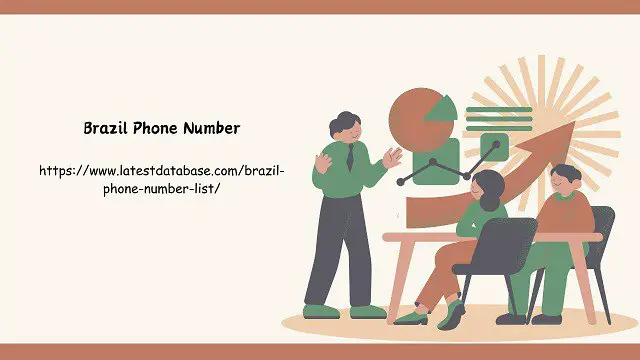Post by jferdousy427 on Feb 20, 2024 5:21:54 GMT
Start your design with a good understanding of the structure of the information space and communicate this structure explicitly. Discussing his research of website usability and trustworthiness, Brent Coker of Melbourne University says: The biggest source of frustration for web surfers appears to be the ability to find relevant information on a website—that’s the biggest killer, the biggest driver of dissatisfaction. As soon as a web visitor is dissatisfied they will leave that website and defect to a competitor. And the best way that website owners can stop that or reduce that is by .
In other words, the major challenge for websites is helping people find what they Brazil Phone Number want straight away. As Coker says, “you need a very good map to help people get around”. And Nielsen has discovered the same thing: Uncovering navigation shouldn’t be a major task: Make it permanently visible on the page. Small children like minesweeping (passing the mouse around the screen to see what’s hidden), but teenagers don’t like it, and adults hate it. Your site’s navigation is your reader’s fallback if he starts to feel lost or uninterested. It’s very important to make it as useful as possible. By this, I mean: Include a search field.

If you have more than about four pages on your site, this is a necessity. Over half of all web users are search-dominant; to find something they may skip navigation entirely and go straight to searching. Position your search field near the top of the page—either on the navigation bar, or somewhere nearby. That’s where people expect it. Navigation should be identifiable and consistent. I’ve seen sites where the main navigation is made up of text links above a graphics-heavy masthead. This is no good, because readers won’t see them. I’ve seen sites where the navigation is styled like a banner ad.
In other words, the major challenge for websites is helping people find what they Brazil Phone Number want straight away. As Coker says, “you need a very good map to help people get around”. And Nielsen has discovered the same thing: Uncovering navigation shouldn’t be a major task: Make it permanently visible on the page. Small children like minesweeping (passing the mouse around the screen to see what’s hidden), but teenagers don’t like it, and adults hate it. Your site’s navigation is your reader’s fallback if he starts to feel lost or uninterested. It’s very important to make it as useful as possible. By this, I mean: Include a search field.

If you have more than about four pages on your site, this is a necessity. Over half of all web users are search-dominant; to find something they may skip navigation entirely and go straight to searching. Position your search field near the top of the page—either on the navigation bar, or somewhere nearby. That’s where people expect it. Navigation should be identifiable and consistent. I’ve seen sites where the main navigation is made up of text links above a graphics-heavy masthead. This is no good, because readers won’t see them. I’ve seen sites where the navigation is styled like a banner ad.





 I'm lonely here.
I'm lonely here.